|
This week I am going to reflect on a change in my practice using Rolfe’s (2001) model of reflection and the Cycle of Experiential Learning, recommended by Osterman and Kottkamp (2015, p.70) Step 1 (What): Over the duration of the Mindlab course, a key change in my practise has been the development of the ‘Professional Learning’ Standard from the Ministry of Education’s Standards for the Teaching Profession (n.d). (outlined below) Step 2 (Now what) Stage 1: Problem identification Before I began this MindLab course, I believed I was a very reflective practitioner however as I become more aware different inquiry models I soon realised my reflections were on a very surface level. None of my reflections were based on any research but mainly on personal experiences and intuition, which resulted in the outcome being very superficial with no substance. As discussed by (Osterman & Kottkamp, 2015) personal experience can be limited therefore using formal knowledge is very valuable. I now realise that by being informed through research and following innovations through a variety of online COLs my practise has improved and I feel more inspired to make changes. Stage 2: Observation and analysis During the Mindlab course, I gathered data through critical reflections on my personal blog and discussions with different colleagues during the first 16 weeks as well other others on the Google+ forum. Through gathering this data I soon realised that my teaching philosophy actually aligned with a lot of the research which has really validated and strengthened my beliefs. I feel that the Mindlab course has joined a lot of dots for me in my pedagogy and given me the confidence to move beyond what I think should happen to actually doing it in my program so it makes a difference to my learners. I now realise that backing up your ideas with research is not a waste of time, but a way to make informed decisions, which as a team leader has really given me the confidence to be more innovative in my decision making. Stage 3: Abstract re conceptualisation For me, I was constantly drawn to new learnings around how to implement change within my team, especially when taking on new innovations such as integrating STEM into our classroom program. I found Robinson (2009) Diffusion of Innovation Theory : The Adoption Curve really inspiring and something that guided me through many team meetings. By identifying those members of my team who were early adopters I learnt what was the best strategy to help “bridge the cavern” to engaged the early majority group. It was also important that I critically evaluated my leadership style in these situations, so I found learning about different theories really relevant to my practise. Stage 4: Active experimentation This year I have been more aware of how I lead my team through different leadership theories. As a Senior Teacher, my leadership style lends itself to the Transformational Theory, by which I share the vision, inspire my team by leading through example and empower them towards change (Bass & Riggio,2006). Also I have learnt how to identify different team members strengths in order to implement change in a more effective manner. Step 3 (What next) For me my next steps will be continuing to use research and online COLs to inspire my teaching practise in terms of learning more about the Maker movement and integrating STEM into my classroom program. I have really found my passion and I intend on leading this innovation in my school through developing my leadership skills and online presence. I am excited about all the new learning that is at my fingertips. REFERENCES Robinson, L. (2009). A summary of Diffusion of Innovations. Changeology. Retrieved from http://www.enablingchange.com.au/Summary_Diffusion... Osterman, K. & Kottkamp, R.(1993). Reflective Practice for Educators.California.Corwin Press, Inc. Retrieved on 7th May, 2015 from http://www.itslifejimbutnotasweknowit.org.uk/files.
0 Comments
Step one (what) If you look at how our world seems to be getting smaller and smaller through the connections we are making with other cultures in a global sense, it is no wonder that being culturally responsive is even more significant than before. Culturally responsive pedagogy is defined by Gay (2001, p.106) as “using the cultural characteristics, experiences and perspectives as conduits for effective teaching”. Another definition of culture responsive teaching that resonated with me was when Bishop in Edtalks (2012) discussed the idea that a teacher whose pedagogy is culturally responsive challenges the “deficit thinking” of student educability and believe that they have skills and knowledge that can help all of their students to achieve. Finally, cultural responsiveness is like being a “cultural translator” by which a teacher takes what the students know through their own culture identity and connects it with what is being taught. I believe our kura is at the green stage by which “indigenous and culturally centred structures and practises are embedded but still colonial”. To me this relates to our school’s core value of “know me before you teach me” which is a strong focus at the beginning of the year to make sure we fully understand our learners strengths and needs. At our kura, when a new Maori whanau arrive, they are greeted by our Deputy Principal - Tane Bennet and asked where they are from, what is there iwi?. We have a map of New Zealand which shows where all our Maori whanau have descended from and connections are quickly made. This approach is the first step we take to know our Maori learners and begin to build strong relationships with the whanau. I believe we have very high expectations of our Maori students and we provide them with lots of opportunities to express and explore their strengths and passions. We also believe that speaking Te Reo should be normalised, that learning the Maori language is for all and should be apart of everyday conversations. We have a radio station that delivers three different Te Reo lessons for our Junior, Middle and Senior students every day. The expectation is that all classes tune in and I know if has helped my own confidence in speaking Te Reo within my class. On reflection, I could almost argue that we tip our toes into the red zone, however I do believe there are elements of the “Pakeha comfort zone” even in my own classroom I would say I revert back to my own western mindset. Step 3 (What next) I did find it interesting at the end of Milne’s presentation (CORE Education, 2017) she spoke about the green zone being the most dangerous because when school’s reach that level, they feel they have “made it”. For our kura, I believe we still can challenge our “white definitions and structures’ in terms of what we teach our children throughout the year and what opportunities we give them to express their culture everyday. At times we fall into the trap of having a culture week where we celebrate the variety of ethnic backgrounds in our community, however this should be something natural and embedded into everyday learning experiences. REFERENCES CORE Education.(2017, 17 October). Dr Ann Milne, Colouring in the white spaces: Reclaiming cultural identity in whitestream schools.[video file]. Retrieved from https://www.youtube.com/watch?v=5cTvi5qxqp4&feature=em-subs_digest Edtalks.(2012, September 23). A culturally responsive pedagogy of relations. [video file].Retrieved from https://vimeo.com/49992994 Gay,G. (2002). Preparing for culturally responsive teaching. Journal of Teacher Education, 53(2),106-116. Milne, B.A. (2013). Colouring in the white spaces: Reclaiming cultural identity in whitestream schools. (Doctoral Thesis, University of Waikato, Hamilton, New Zealand). Retrieved from http://hdl.handle.net/10289/7868 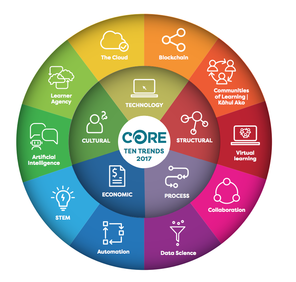 INTRODUCTION This blog post is dedicated to thinking about global trends and how they impact on my own teaching practise. The future is unpredictable however by looking at trends helps inform our ideas and opinions about what might happen OECD (2016). I agree that by bringing an awareness of trends into your professional practise allows teachers and leaders to broaden their horizons and make informed decisions. I am going to reflect on a contemporary trend in both New Zealand and Internationally by using Rolfe’s (2001) model of reflection as a scaffold. WHAT The trend that has captivated my attention recently is the integration of STEM (Science, Technology, Engineering and Math) in the New Zealand curriculum. As discussed in CORE Education, Ten Trends 2017, the process of “the way we do things” is moving towards more design thinking models. In which the emphasis is on innovation and creativity to inspire deep learning - where learners create new knowledge using real life problem solving. Core Education (2014) also talks about the maker movement “is all about putting the making back into learning”. This surge of STEM in our curriculum is also attributed to a new awareness of current economic trends relating to how business generate wealth and gain necessary skills sets. So what relevance does this have to my current teaching practise? I believe I am a Maker at heart, I have always embraced a Maker culture in my classroom program, even if I didn’t have the research to backup my educational decisions. So when my school built a space dedicated to STEM called the Makerspace, I knew I needed to find a way to integrate more making into my classroom program. SO WHAT At the heart of some of the most complex values of the New Zealand Curriculum is innovation, how do you teach children the able to come up with new ideas? A big part of this process is design thinking, critically thinking about a problem and developing a range of different solutions and selecting the best one. This is how the STEM empowers children to think critically, work collaboratively and connects the digital world with the physical world. As discussed by Dr David Parsons in Enabling e-Learning (n.d), critical thinking skills is a vital component of our education system because we now live in a world where information is at our fingertips so we are no longer driven by simply remembering or recalling facts. Therefore creating an environment in which children are free to create, explore and experiment regardless of what tools they have is so important for our learners. This type of learning can challenge many teachers who are not willing to change the way they do things. I have found that it takes time, preparation and a willingness to make mistakes so fine tune a classroom learning program that embraces STEM challenges and maker tasks. It’s the difference between simply creating posters about what has been learnt to asking the question “so what...now you know this, what are you doing to do about it” WHAT NOW? In New Zealand the Maker movement and STEM teaching is just starting to capture the interest on many educators. The Digital Technologies Curriculum (2017) is a step in the right direction in terms of the integration of technology into the classroom, however works still needs to be done to address this trend. It will come down to those educators who are passionate about STEM learning to share their expertise, knowledge and resources through various Community of Learning networks to help support our teachers to see the benefits which will in turn better support our tamariki for their future. REFERENCES Core Education (2014) Ten Trends 2014, Retrieved from ,http://www.core-ed.org/research-and-innovation/ten-trends/2014/maker-culture/ Core Education. Ten Trends 2018. Retrieved 11 March, 2018. http://core-ed.org/research-and-innovation/ten-trends/2017/ Enabling e-Learing (n.d.) Teaching for 21st century learners, retived from http://elearning.tki.org.nz/Teaching/Future-focused-learning/Teaching-for-21st-century-learners Ministry of Education. (2017). Digital Technologies. Retrieved 11 March, 2018. https://education.govt.nz/assets/Documents/Ministry/consultations/DT-consultation/DTCP1701-Digital-Technologies-Hangarau-Matihiko-ENG.pdf OECD. (2016) Trends Shaping Education 2016, OECD Publishing, Paris. DOI: http://dx.doi.org/10.1787/trends_edu-2016-en Rolfe, G., Freshwater, D., Jasper, M. (2001) Critical Reflection Model. Retrieved from: https://my.cumbria.ac.uk/media/MyCumbria/Documents/ReflectiveModelRolfe.pdf Step One-Descriptive stage.
Over the last few years, my use of social media tools has steadily increased, from connecting with teachers on the Teachers page on Facebook to creating my own Twitter account and connecting with educators who share my passions. Since become an ADE, my social networking has improved, however I still am a bit of a “ghost tweeter”, preferring to lurk in the background rather than put myself out there. I have used social media mainly to develop my own teaching practices, especially when I need some new ideas on how to teach a particular topic. I find Pintrest a great source of knowledge and inspiration. Lately, I have used social media to learn how to use different Apps like Brushes in my classroom and regularly visit blogs such as Tricia Fuglestad (http://drydenart.weebly.com/). I have been in contact with her when I can’t quite figure out how her students have created something and really enjoyed learning from experts around the world. This year, my goal is to integrate STEM and Makerspace pedagogy into my classroom program, having the opportunity to connect with groups on Twitter who share this goal adds and extra layer of support and encouragement to keep trying new things. STEP TWO - Comparative Stage I really admire educators such as Kathy Cassidy who have really embraced using social media in class with their learners. I agree with her belief that digital technology is where children are at and to get them to “power down” when they come to school would disconnect them from what they know at home. As discussed by Sharples (et al, 2016) using social media can bring learning to life and engage students by giving them access to experts who can give them up to date information as it happens. The example the Kathy spoke about when she used her class Twitter account to connect with other children in Australia after the floods really proved how social media supports empathy in children. However if the pedagogy is unsuccessful teachers run the risk of accessing inaccurate information and can make classroom and students at risk of hostile responses. I think by participating in online projects like @RealTimeWWII and PepysDiary.com you can address the challenges and harness the potential benefits of social media for both learner and teacher. Step Three- Critical reflection. Social Networking with the correct pedagogy and purpose has the potential to take learning experiences for children to a deeper level. By helping children to connect with a wider audience on a global scale, can give their learning a real life feel as well as make a genuine impact on their community. Social networking also has the potential to develop teachers at their own pace, target their own strengths and areas of weakness in a safe and non threatening manner, as Seesaw describes is “PD in you PJ’s”. However for all this to happen, teachers need to open minded to a change in their delivery of the curriculum and confident to take risks alongside their learners. For many of us, social media holds many red flags that prevent us from using it with our class, but with careful preparation, time and patience, we all can unlock its potential. References Sharples, M., de Roock , R., Ferguson, R., Gaved, M., Herodotou, C., Koh, E., Kukulska-Hulme, A., Looi,C-K, McAndrew, P., Rienties, B., Weller, M., Wong, L. H. (2016). Innovating pedagogy 2016: Open University Innovation Report 5. Milton Keynes: The Open University. Retrieved from http://proxima.iet.open.ac.uk/public/innovating_pedagogy_2016.pdf Tvoparents. (2013, May 21). Using Social Media in the Classroom.[video file]. Retrieved from https://www.youtube.com/watch?v=riZStaz8Rno 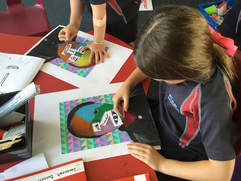 As educators in this new digital age, we are coming increasingly aware the impact of our online presence can have in regards to how we are preserved by our community and peers. With so many fantastic tools at our fingertips that enable us as teachers to share our children’s learning with their whanau as well as our colleges, the need to identify and understand your professional ethics has never been so important. Ethics is commonly defined in terms of what it is not - misconduct, abuse of power and deception Ehrich et al. (2011). However ethical principles such as integrity, responsibility and care are used to provide guidance on our behaviour as professionals. The ethical dilemma that I wish to address is around sharing student’s photographs and learning content online. The first time I really was made aware of the importance of following the correct procedures around code of ethics was when Apple created an educational video involving students at our school. Every family needed to complete a form which gave Apple permission to use their child’s image in the making of the video. If the family did not sign the form, the child was not allowed to be photographed, even if it was a whole school event, or they were taking photos at break time, that children would need to be removed from the vicinity. It was a huge undertaking and really highlighted how seriously Apple followed their Code of Ethics. At a classroom level, for the past few years all our teachers and students had their own blog to deliver content and share learning. This scenario reminded me of the ethical dilemma of information privacy online shown in one of this week’s videos. By analysing this dilemma using the ethical decision making framework Ehrich (2011) there are a number of factors involved. Firstly around professional ethics, which refers to the point that teachers are expected to behave according to the schools codes of conduct Ehrich et al. (2011). At our school, all families are required to sign a form, stating whether or not they give the school permission to share images of their child online. If they are not willing, then the teacher is informed and their wishes respected. Often I tend to avoid full facial photographs of children if possible, rather I take close-up of what they are doing as a means to guide my own professional ethical practise. In regards to the Apple scenario, an important force present is the culture of the organisation. They had very clear and formal procedures that were unwavering, almost intimidating, as we were constantly aware of making sure we were all following their code of ethics. I believe that the factor of global context was also relevant because this video was to be shared internationally so that added extra rigour to their digital ethics. So where to now? currently at our school, we have reviewed the effectiveness of blogs to connect with parents and share learning. We found that not many actually visited their child’s blog and that the posts being made were inconsistent in terms of quality and content. Also that any parent could visit any child’s blog to see what they were doing. Therefore we have switched to Seesaw which is a much more private forum in which parents and whanau can only see their child’s work. This way, it is easier to ensure that the content being shared is more private therefore adhering to our school’s code of ethics. References Ehrich, L. C. , Kimber M., Millwater, J. & Cranston, N. (2011). Ethical dilemmas: a model to understand teacher practice, Teachers and Teaching: theory and practice, 17:2, 173-185, DOI: 10.1080/13540602.2011.539794 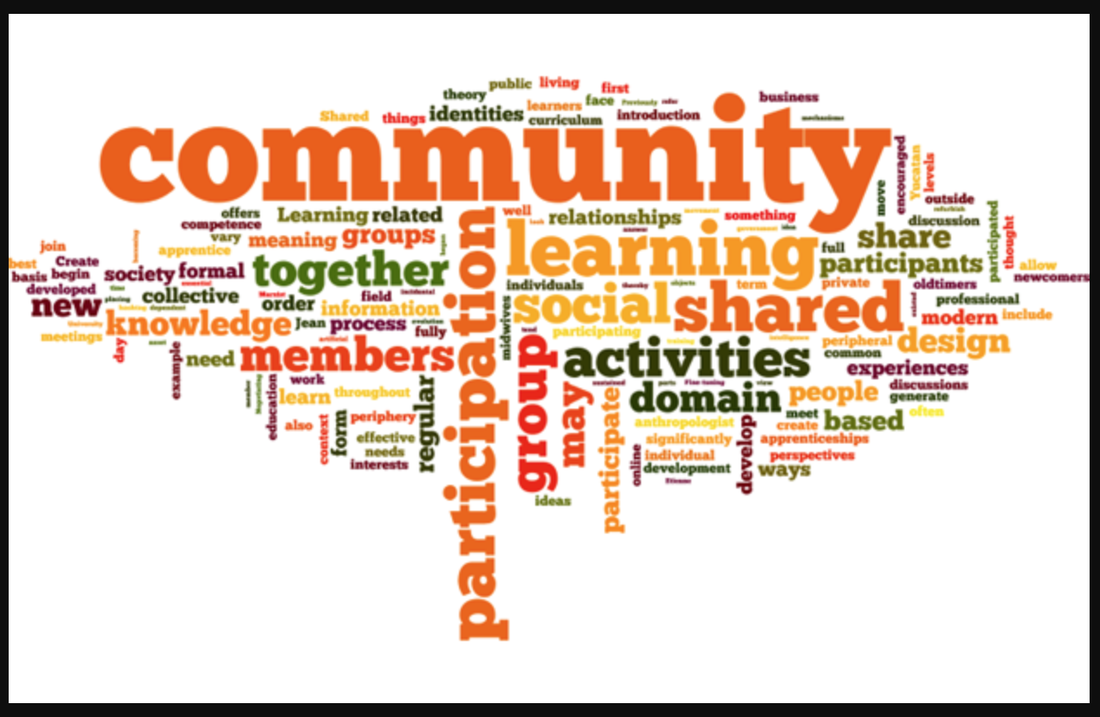 It took me a while to think of two teacher inquiry topics, reading other’s blog comments and the shared padlet really helped me streamline my ideas. My two inquiry topics are: Teacher inquiry topic 1 - Which design thinking model best fosters creative confidence within children so they can connect their knowledge to real world learning. Teacher inquiry topic 2 - How can the benefits of makerspace learning promote student engagement and achievement across the rest of the curriculum? These two topics I believe are closely linked in the way that tackle the issue around nurturing critical thinking and innovation. Critical thinking or knowledge construction as discussed in the 21st Century Learning Design rubric (2012), requires children to do more than just reproduce what they have learnt. They should be encouraged to go beyond this to generate ideas and understandings that are new to them. Through this Mindlab course, I have had the opportunity to critically reflect on my teaching practise and whether or not I am developing the 21st Century Learning effectively in my day to day classroom program. What I have come to realise is that I have only really scratched the surface and that all to0 often I knowingly revert back to children merely regurgitating what they have learnt, rather than them creating something new from it. As discussed in the Ministry of Education (2012) knowledge should not been seen as the end result, but something that allows children to “do” something. Wenger et. al. (2002) define a CoP as ‘a group of individuals participating in communal activity, and experiencing/continuously creating their shared identity through engaging in and contributing to the practices of their communities’. He believes that learning requires social participation and that it is central to our human identity. It is a group of people who share a passion for something and want to learn how to do it better by interacting with each other regularly. Which I believe happens naturally in an effective school where there is high trust and strong communication. However not every community is a community of practice, as E & B Wenger-Trayner (2015) discusses, there are three characteristics that determine a CoP. Firstly the domain, which is the shared common interest of the group, the learning that connects everyone together. The community, where members engage in activities and discussions, help each other, and share information in order to develop the domain. Lastly the practise, which relates to building a shared repertoire of resources: experiences, stories, tools, ways of improving the domain. Over the course of this last reflective blog entry, I have been thinking which CoP’s do I associate with? Firstly the colleges I work with, my team I lead as well as other teachers who share my interests in developing critical thinking skills. I am lucky that at my school I don’t have to go too far to find like minded educators who share my “domain” and we have already started to connect and share resources. This community is definitely something I want to engage with more next year, as I believe I have a lot to learn from them. I also know that the Senior Leadership Team would fully support and contribute to any new learning around developing creative confidence in our learners. Being an ADE, I have a strong online CoP that I need to tap into more regularly, I tend to watch and follow rather than actively contribute. I do also get inspiration from Pinterest and Twitter but again, I am reluctant to share my own practises. This is something I would like to improve on next year as I feel I lack confidence to put myself out there with online communities. References Ministry of Education.(2012). Supporting future-oriented learning and teaching: A New Zealand perspective. Retrieved from https://www.educationcounts.govt.nz/publications/schooling/109306 Wenger-Trayner, E. & B. (2015). Introduction to communities of Practice: A brief overview of the concept and its uses. Retrieved from http://wenger-trayner.com/introduction-to-communities-of-practice/ Activity 2: A Change in My Practice Towards Future-oriented Learning and TeachingHow has this course changed my teaching to date? I’m not totally convinced I have made any radical changes in my practices (yet), however it has made me reflect on my teaching and learning pedagogy and given it some credibility through research literature. The biggest “change” I am going through at the moment is all around the notion of knowledge. The more I read about 21st Century learning and future orientated learning, the more this concept of acquiring and using knowledge resonates with me. I have begun to critically reflect on my perception of knowledge in a classroom setting and how I need to change my program to incorporate more critical thinking and less knowledge acquiring. So that’s what I am going to base this reflection on today. During both my Leadership Assignment 2 and the course reading this week’s reading by the Ministry of Education (2012) Supporting Future-oriented Learning and Teaching: A New Zealand perspective I have had a few “a-ha” moments. I have learnt that knowledge and critical thinking is not about learning stuff and then regurgitating it, but turning it into something new. Which when I read it out loud it seems so simple, I wonder how I could not have made that connection sooner! I think on reflection I have always held strongly onto the idea that every unit of learning needed a “so what’ moment, a reason for the children to gain knowledge, but in recent years getting the children to know stuff seems to have become the “so what”. I feel I have taken the easy option of getting them to create a presentation, an iMovie or book in Book Creator to present their knowledge and I should have explored more opportunities for children to design or make something new. As discussed in the Ministry of Education (2012) knowledge should not been seen as the end result, but something that allows children to “do” something. I really like the way this article talks about knowledge traditionally is thought of as a noun, but future oriented learning changes it into a verb. Very clever... I am going to use this! When I think about this perception of knowledge, I can see how the Maker Movement really embodies future focus teaching and learning. Core Education (2014) talks about the maker movement “is all about putting the making back into learning”. Which is not a new concept if you look to theorist such a Dewey who was an advocate for hands on learning. Critical thinking or knowledge construction as discussed in the 21st Century Learning Design rubric (2012), requires children to do more than just reproduce what they have learnt. They should be encouraged to go beyond this to generate ideas and understandings that are new to them. I haven’t implemented this change yet, it’s a work in progress and I feel it requires more research and a deeper understanding of how to develop critical thinkers in a classroom. I know that my future assignment will help me gain this “knowledge” so that in 2018 I can turn my new understanding into action. I need to turn my knowledge from a noun to a verb. REFERENCE
Ministry of Education.(2012). Supporting future-oriented learning and teaching: A New Zealand perspective. Retrieved from https://www.educationcounts.govt.nz/publications/schooling/109306 Core Education (2014) Ten Trends 2014, Retrieved from ,http://www.core-ed.org/research-and-innovation/ten-trends/2014/maker-culture/ ITL Research. (2012). 21CLD Learning Activity Rubrics. Retrieved from https://education.microsoft.com/GetTrained/ITL-Research 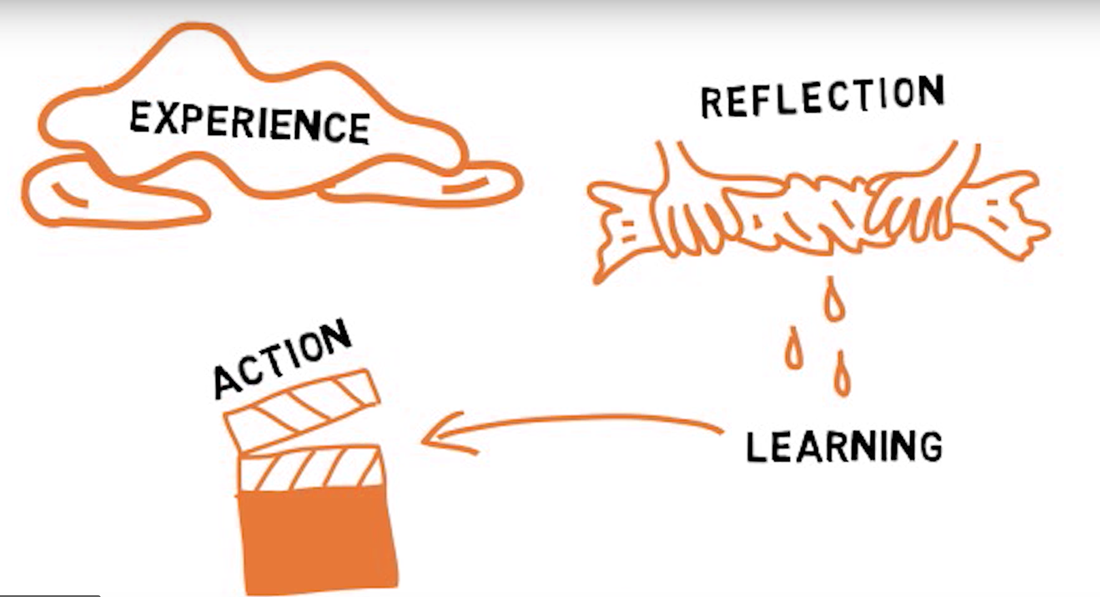 To me, critical reflection is a major part of my teaching practise, to be honest I can’t see how you could be a successful educator without it. Reading through the course notes, I know I don’t deep dive into the whole process and I certainly don’t have time to follow any models as such. However I know that over time I have become more effective at looking back at a learning experience, thinking about what went well and what I call “even better if”. I found the five levels of reflections described by Finlay (2008) a good way to evaluate on my own reflective practise. For me, a lot of my reflective moments are what Finlay (2008) describes as “rapid”, a quick analysis of how things are going and what I need to do make it work better. This is when I’m in class management mode, it doesn’t require deep thinking but more intuition. As an experienced teacher I feel these are almost second nature, when you are a beginning teacher it’s these decisions you tend to doubt. I wonder if this type of reflection could be mistaken for just knowing what worked well before therefore no real reflection is needed - like being on automatic pilot and not really changing your practise or looking for new solutions. When I work with children on their specific learning needs, my reflections need to be more thoughtful and directed. Just like rapid reflection, I do this in the moment but is not rushed or spontaneous, it requires thinking back to other situations that worked and applying the lessons learnt from that experience. This repair style reflection means that I would alter my behaviour depending on who and what I was working on. I think I do this type of reflection really well, however I know when I’m tired or stress that my patience and ability to empathise is greatly reduced. It’s harder to take the time to reflect when you feel you have exhausted all your ideas in the tool kit and frustration has set in. In that situation, I usually review what happened on my drive home where I can remove myself my the situation and look at it more rationally. This review style of reflection also happens in our team meetings but in reflection probably only at a surface level. Each week we sit together and korero about how our week has gone, children we are concerned about and we have the opportunity to share our thoughts and feelings. In theory this is a great opportunity for critical reflective practise, however we probably spend too much time discussing the what, who and how, while failing to go deeper by looking into the why and ways this will move us forward. If we spent more time thinking about the causes of learning deficiency then our solutions may be more long term. Finlay goes onto discuss two other levels of reflection that I know I could improve on in my practise one being research and the other reauthorizing and reformulating. Even though for my target learners, I would collect and analyse data over a longer period of time I don’t spend any time reading research or finding out about academic theories to critically examine my teaching practise. To be honest that style of learning doesn’t really interest me, I would rather go and speak to another college or observe someone teaching. I don’t think it really matters how you find your solutions, as long as you are always actively moving forward in your thinking by reflecting on your past and the lessons you have learnt. Finlay, L. (2009). Reflecting on reflective practice. PBPL. Retrieved from http://www.open.ac.uk/opencetl/files/opencetl/file… |
Archives
March 2018
Categories |
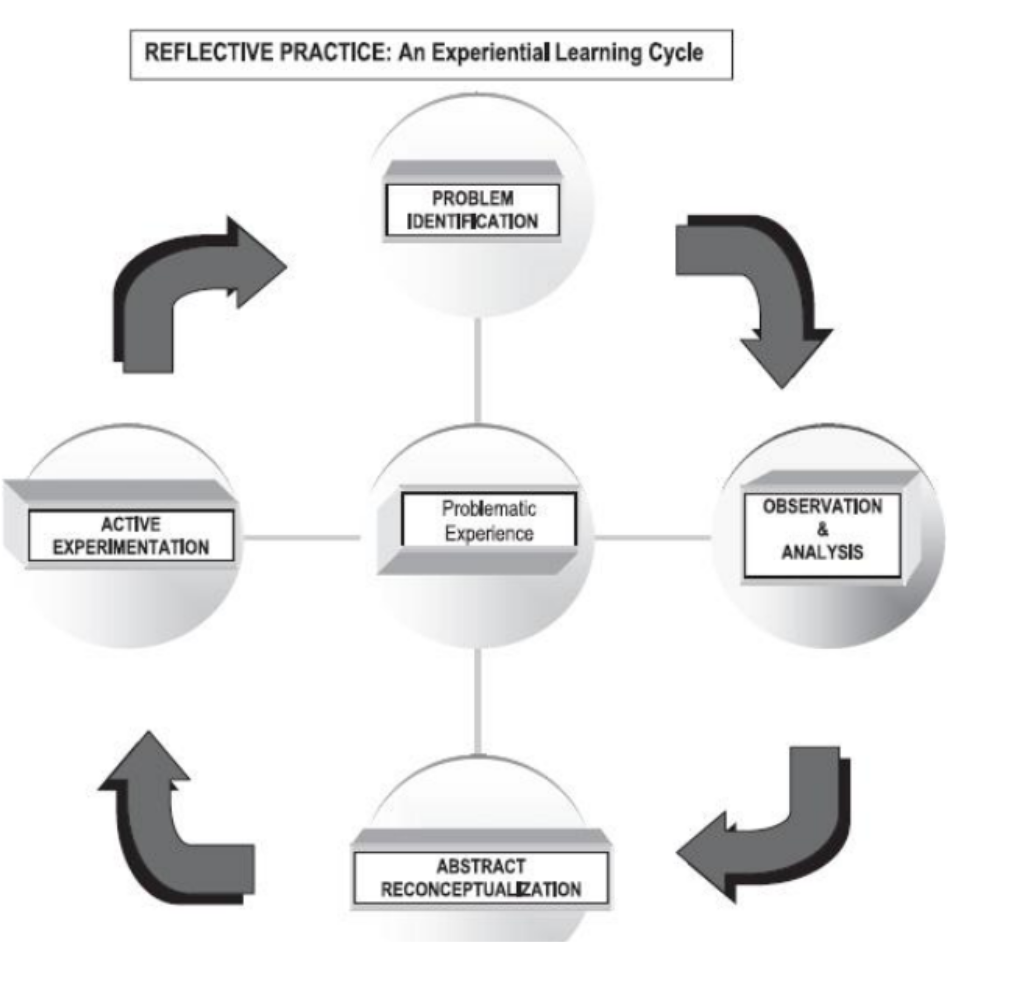

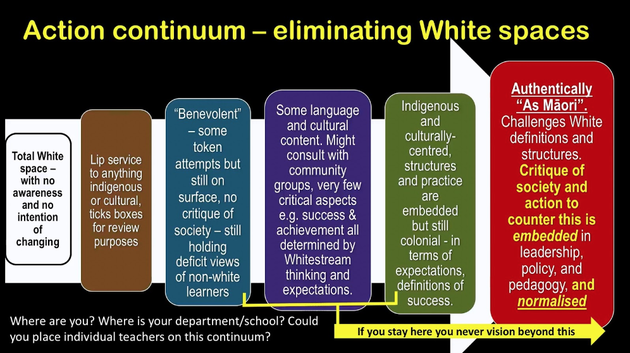

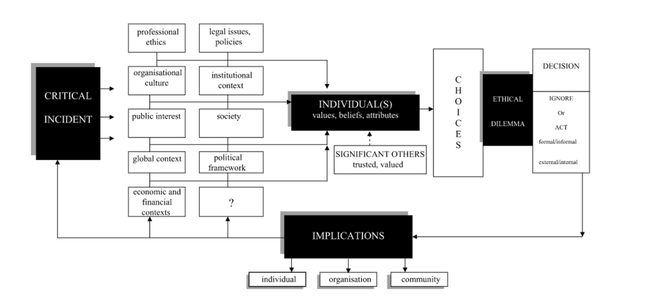
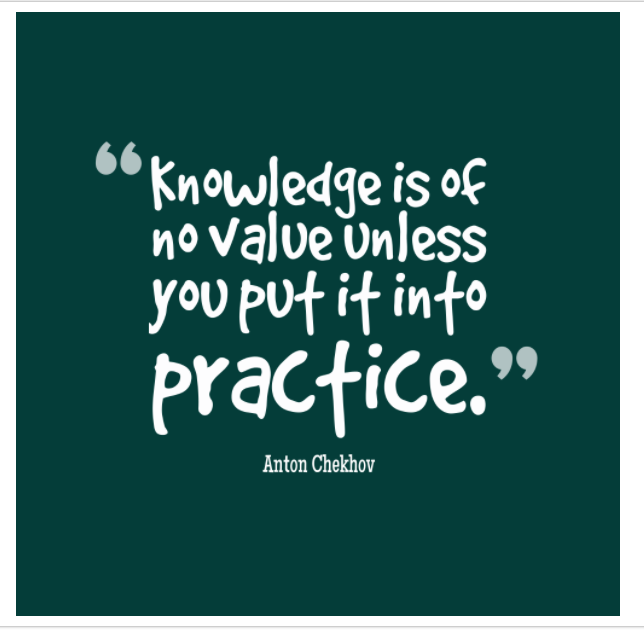
 RSS Feed
RSS Feed
